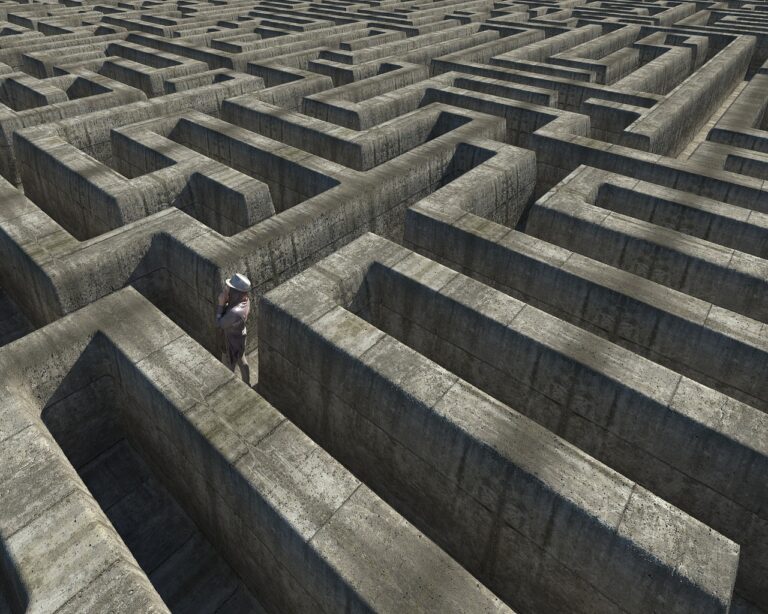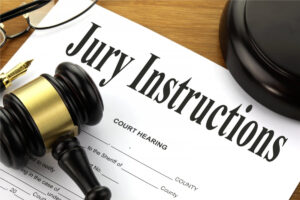The SCV Explains Virginia's Dead Man's Statute (...or does it?)
In this week’s published opinion from the Supreme Court, we take on one of the most troublesome evidentiary issues: the Dead Man’s Statute. In Bon Secours v. Rogakos, the SCV also reminds us that jury instructions are not to be taken lightly.
First, Virginia’s Dead Man’s Statute: Va. Code § 8.01-307.
Our statute reads, in relevant part, as follows:
In an action by or against a person who, from any cause, is incapable of testifying, or by or against the committee, trustee, executor, administrator, heir, or other representative of the person so incapable of testifying, no judgment or decree shall be rendered in favor of an adverse or interested party founded on his uncorroborated testimony. In any such action, whether such adverse party testifies or not, all entries, memoranda, and declarations by the party so incapable of testifying made while he was capable, relevant to the matter in issue, may be received as evidence in all proceedings including without limitation those to which a person under a disability is a party. The phrase “from any cause” as used in this section shall not include situations in which the party who is incapable of testifying has rendered himself unable to testify by an intentional self-inflicted injury.
What does it mean? The issue has plagued Virginia practitioners for years. As some of our most well-known experts on Virginia evidence have put it: “the present statute is unique and convoluted in its ramifications.” 1 The Law of Evidence in Virginia § 10-7 (2024).
The statute’s purpose? To allow certain evidence to be admitted (with safeguards in place!) rather than excluding the evidence entirely, as at common law.
The problem? As was true in 1923 and remains true today, “[n]early all of the difficulties that have arisen in practice have grown out of the exceptions to the rule that interest should not disqualify a witness.” Epes’ Adm’r v. Hardaway, 135 Va. 80, 88 (1923); see also Shumate v. Mitchell, 296 Va. 532 (2018).
The Supreme Court’s new opinion provides some guidance on interpreting the statute, but it sidesteps other questions raised. As the SCV explains, there are two main components of the statute:
- testimony from an “interested” or “adverse” witness must be corroborated before judgment can be entered for the interested or adverse party; and
- the statute broadly permits the introduction of hearsay testimony on behalf of the deceased or disabled party.
In our case, the plaintiff, Father Rogakos, fell when he was unattended while receiving medical care. Before succumbing to his injuries, Father Rogakos said multiple times that he was hurt when he leaned against a stretcher, which moved, while he was changing. His Estate Administrator filed a wrongful death action against the hospital for negligently monitoring him and for failing to ensure the stretcher wheels were locked.
The Hospital sought to invoke the Dead Man’s Statute, but the Plaintiff and their Amicus (my excellent colleagues at the VTLA) argued the statute didn’t apply to this situation at all. According to the Plaintiff, the Dead Man’s Statute is inapplicable when the deceased’s statements are offered into evidence against the surviving party.
The SCV avoided deciding whether the Dead Man’s Statute applies when the statements “emanate from the deceased person as opposed to the survivor.” The Supreme Court first decided that some of the witnesses who heard the deceased’s statements and who testified were not adverse or interested parties. Because these testifying witnesses weren’t interested, their statements did not require corroboration to be admitted. Consequently, the Supreme Court concluded that, “in the words of the Dead Man’s Statute, the judgment was not ‘founded’ on the ‘uncorroborated testimony’ of ‘an adverse or interested party.’”
But what about the other witnesses who testified about hearing similar statements from Father Rogakos about his cause of injury? Even if those witnesses were interested or adverse, their testimony was merely cumulative of the evidence provided by the non-adverse witnesses.
And the decedent, Father Rogakos, himself—was he considered an interested party and did his statement require corroboration? Nope.
Was there a Due Process violation here in admitting such evidence under these circumstances? Also no: the issue wasn’t properly preserved and the Court indicated there were reasons the argument was unlikely to succeed regardless.
The Supreme Court didn’t decide all of the issues that plague practitioners, but for those of you who encounter this statute, it is best to know the current status of the law so that you can operate accordingly (or know what issues to raise on appeal next time!)
Jury instructions can be a trap for the unwary practitioner.
Beware of jury instructions. Do not let them be an afterthought. It is critical to evaluate them through the lens of your opposing counsel and the appellate courts.
Here, the parties stipulated that Father Rogakos died from his fall. The Hospital then sought to admit a jury instruction which states:
“if you believe from the evidence that the death of Constantine P. Rogakos might have resulted from either of two causes, for one of which the Defendants might have been responsible and for the other of whicih the Defendants were not responsible, and if you are unable to determine which of the two causes occasioned Constatine P. Rogakos’s fall, then the plaintiff cannot recover.”
The SCV held that Father Rogakos’s death resulted from the fall given the parties’ stipulation, and “the parties disputed the cause of the fall, not the cause of death.” Because the second part of the instruction referred to different causes of the fall, “the instruction contained an internal inconsistency and, by intermingling the stipulated cause of death, which was not at issue, and the cause of the fall, which was very much at issue, the instruction could serve as a source of potential confusion.”
But no one noticed this flaw, appeals counsel argued, and if anyone had, counsel could have remedied it. Isn’t it too late now on appeal to quibble about the issue? No. The Supreme Court concluded by reminding us that circuit courts are not obligated to fix defective jury instructions, and appellate courts may affirm the Circuit Court’s rejection of an improper jury instruction for entirely different reasons. Here, the CAV merely determined the instruction was cumulative–and didn’t note the same issue with the instruction that the SCV did.
There were other issues (a demonstrative exhibit and proximate cause) that are not quite so contentious, but the opinion is worth a read regardless. My colleague, Juli Porto, also wrote an excellent blog post.
Takeaways:
- Do not let jury instructions be an afterthought. Even if an issue with a rejected instruction wasn’t clearly articulated by opposing counsel in the Circuit Court, you must think through any possible issues on appeal when you’re the appellant.
- If you have an important case coming up, this is an excellent example of where embedded appellate counsel can help. We can help with pretrial motions, issue preservation (the defense failed to preserve their Due Process argument), and jury instructions. Give me a call.



